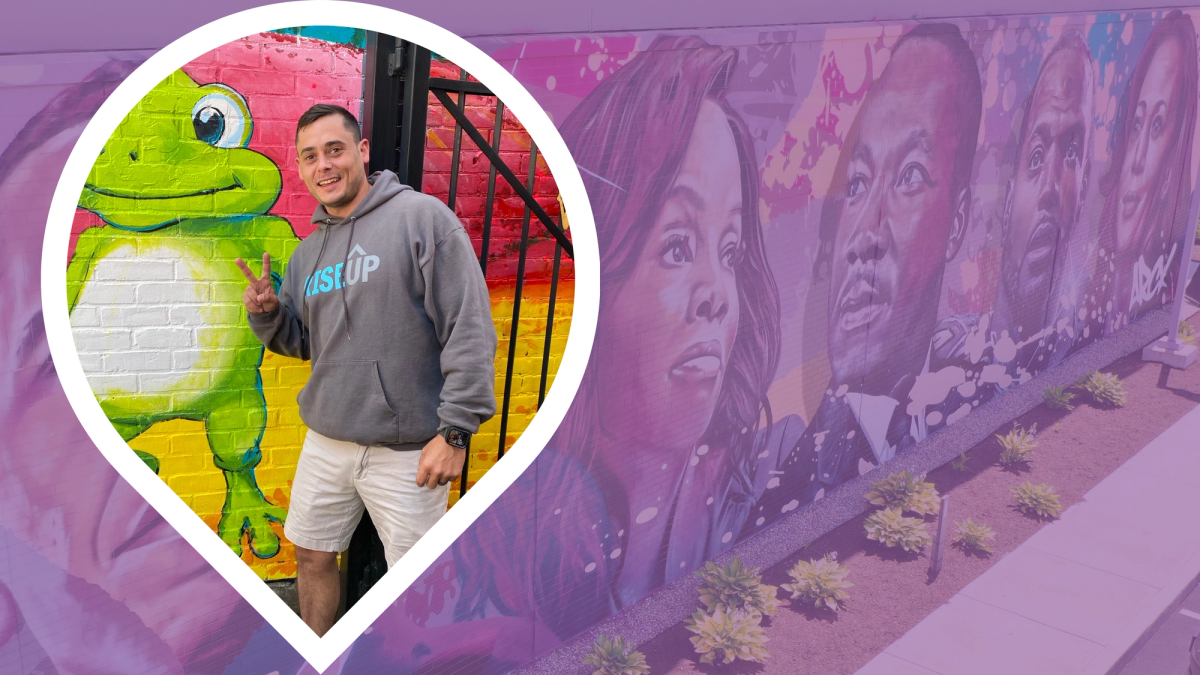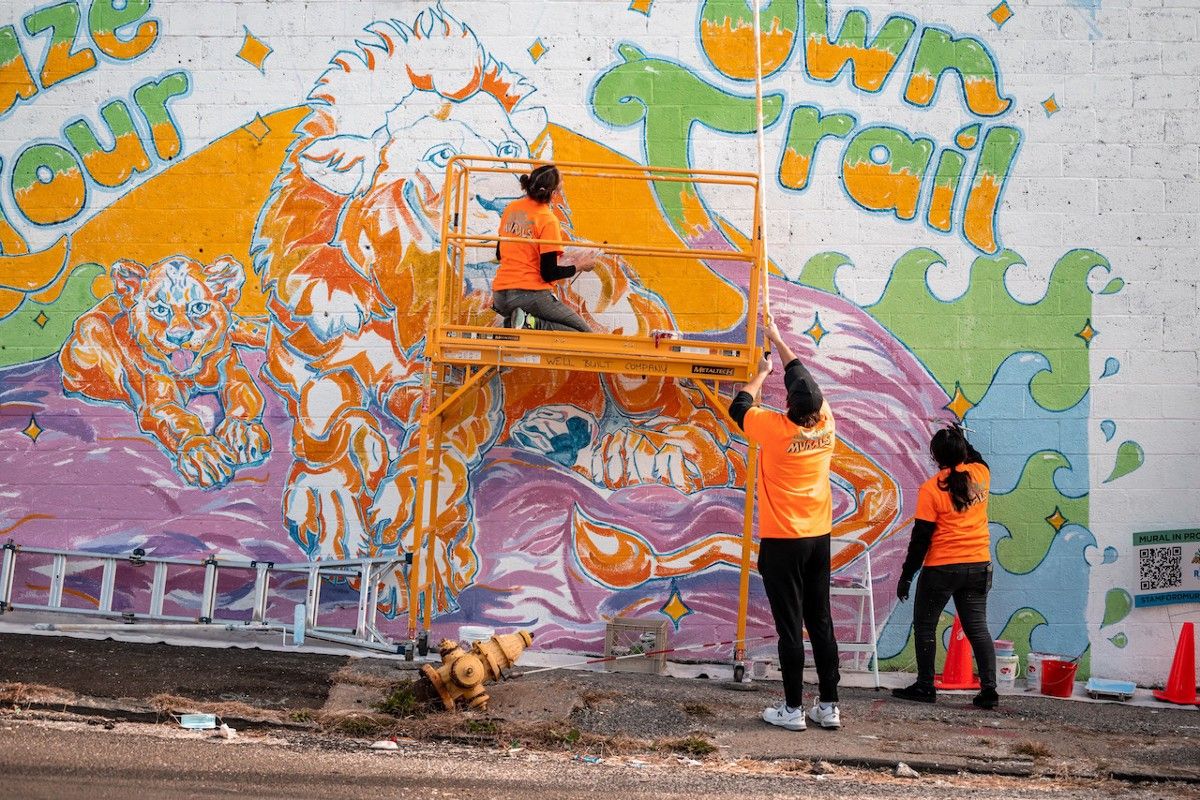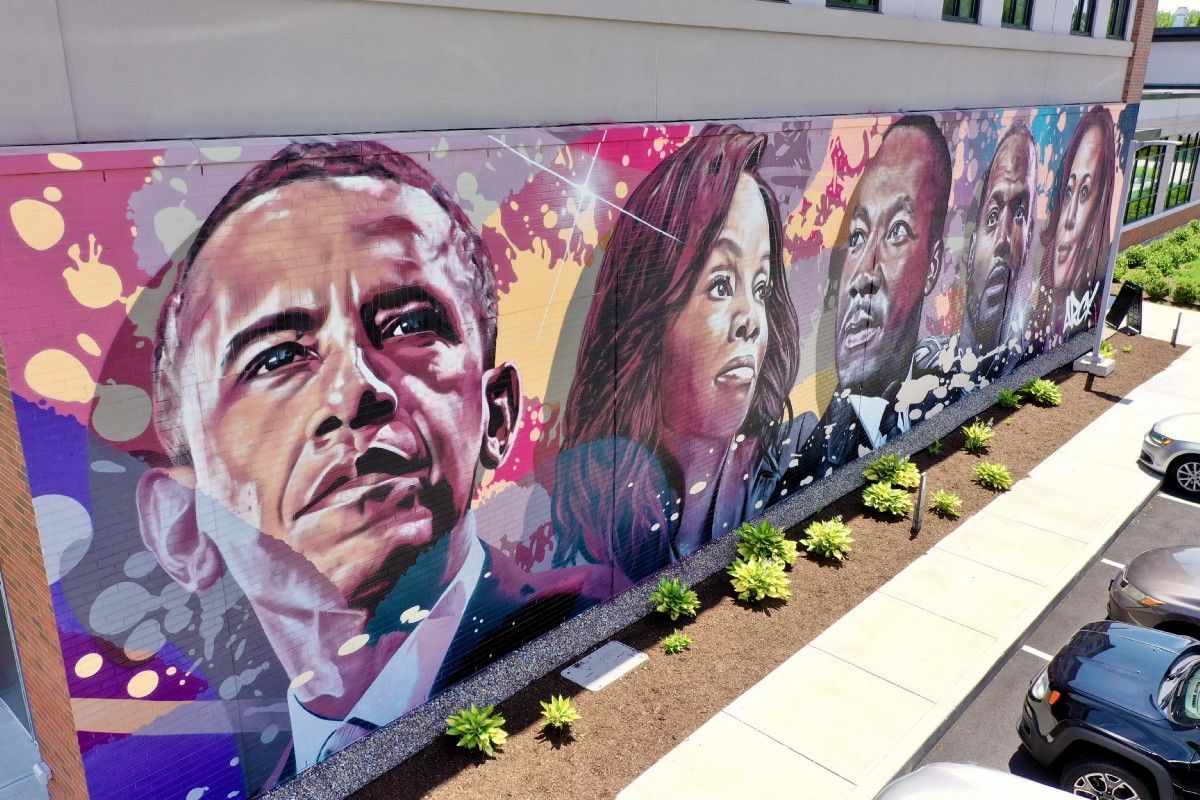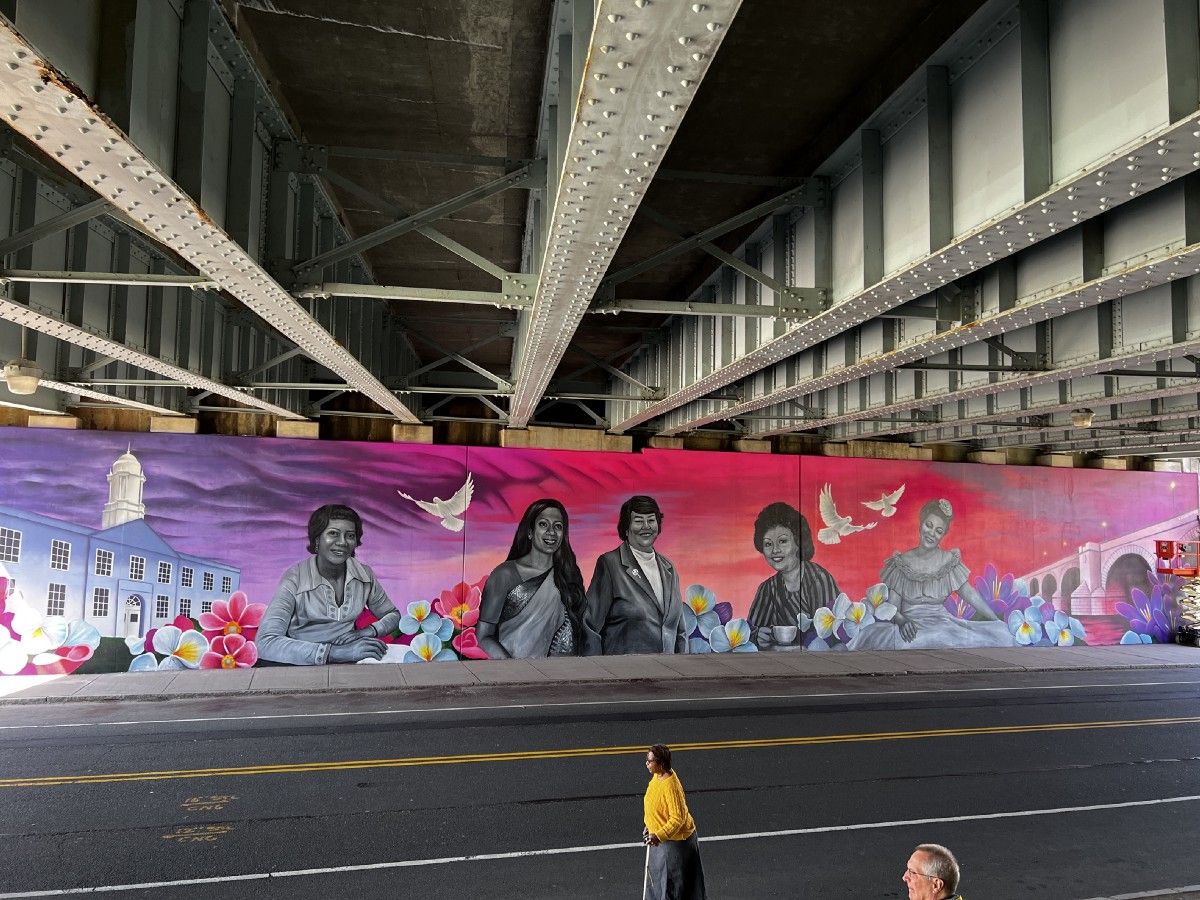
Patron in the City: Matt Conway
At Patronicity, we believe that passionate individuals can spur change in their communities. We recently spoke with Matt Conway to learn more about his passion for community and how he serves as a Patron in the City.
Since November 2020, Matt Conway, founder and Executive Director of the RiseUp for Arts, has run 20+ successful crowdfunding campaigns with Patronicity and qualified for close to $150,000 in matching grant funds from the Sustainable CT Community Match Fund to install murals across the state of Connecticut. Most recently, Matt and RiseUp for Arts have embarked on the MLK39: Racial Equity Mural Tour, a series of 39 MLK and racial equity-themed murals throughout the state symbolizing each year of Martin Luther King’s life. RiseUp for Arts consults with artists, cities, nonprofits, companies, real estate developers, schools, and local community members to make mural and placemaking projects come to life to fulfill their mission “to empower communities to imagine new possibilities through public art and education.”
At Patronicity, we believe that passionate individuals can spur change in their communities. We refer to those individuals as Patrons in the City, dedicating their time, sweat, and tears to building vibrant communities. We recently spoke with Matt Conway to learn more about his passion for community and how he serves as a Patron in the City.

Q: Tell me about yourself, what you do, and how you got involved in RiseUp.
Matt: My name is Matt Conway, and I am the founder and Executive Director of the RiseUp Group. We were founded in 2012 as a youth development and mentoring program in Hartford, Connecticut, and in 2015, our youth produced their first public art mural project as part of the community service part of our program. It was the first mural in Hartford in a while, and a lot of other organizations and businesses became interested. They started reaching out asking questions and we started doing a handful of murals each year since 2015, really focused on community-based murals.
In 2020, we really saw an exponential increase in public art in the state and demand for public art. Come 2021, we doubled our 2020 numbers, and much of that is because of the Sustainable CT Community Match Fund program and the fundraising we did through Patronicity. We have generated close to $150,000 through our partnership with Sustainable CT. It’s terrific to see the support from the community, the artist community, and what this does for neighborhoods.
Q: How has the community responded to your work? What do you hope the community will take away from the MLK39 murals?
Matt: Public art gives voice to the communities, to the neighborhoods, to the youth. It is essentially a billboard telling an inspiring story or message when they drive by. Some have a social justice lens, if that’s what the community wants, some are just inspiring, happy murals.
We have a 100-foot-tall mural in downtown Hartford of a girl watering flowers. It was unveiled in the spring and meant to welcome people back to the city coming out of COVID and just to really bring inspiration to the community. Just the amount of selfies and shares you see on social media — even if someone had a bad day, this mural is putting a smile on their face.
The social justice murals really help marginalized communities in the state feel like they have a voice and tell a story. In Southington, for example, they just installed a Christopher Columbus statue two years ago. So, as everyone is taking them down, this town in Connecticut decides to put one up. And the minority, the Black and Brown community — anyone that is not White in Southington, really feels the racial tension in town and doesn’t feel like they have a voice. In fact, the town council voted to not support the MLK social justice mural in town, but we still made it happen, and we worked with a group of moms that call themselves ‘The Melanin Moms’ in Southington, and it gave them a voice. Their kids were painted in the mural. This was really the first time that anyone in the Black community felt like they were able to lead a project in town. We just sit back and facilitate. It’s really the voice of the community that we help to tell their story.

Q: What advice would you give to someone who’s interested in getting involved in their community?
Matt: Just do it. Just get after it. One of our slogans as an organization that we started and has been on our t-shirts for the last ten years is the hashtag “#GetAfterIt.” We really believe that this isn’t rocket science to get involved in your community. It’s about connection. It’s about rolling your sleeves up, grabbing a shovel, and going to spread mulch. It’s just about doing it and getting after it.
Reach out to your local volunteer organizations, reach out to the schools, organize something yourself, start your own nonprofit. I started this when I was 22 years old, right out of UConn. I was a very naïve, baby-faced kid, essentially. If I could do that then, then anyone can do it. I just really encourage everyone to make it happen.
Q: Why do you love where you live?
Matt: I’m going to frame where I live as Connecticut as a whole, because I’ve lived in many parts of the state. I think Connecticut puts itself at a disadvantage because when people think about where they live, it’s the little ten-square-mile town they live in, and Connecticut has 169 of them.
For Connecticut to thrive into the future, we really need to think about ourselves as a state. Collectively, how can we all work together to improve our neighbor’s life in the next town over, just as much as we want our own street to be improved.
What I love about Connecticut is all the different personalities that come with having 169 different towns. A lot of people think of us as a very homogenous place, but there is so much culture within each individual community that is so special and needs to keep that history documented as we do approach a more regionalized future in the state.

“Never doubt that a small group of thoughtful committed citizens can change the world. Indeed it is the only thing that ever has.” — Margaret Mead
Become a patron in your city by launching your project today or donating to a project in your area at www.Patronicity.com.

